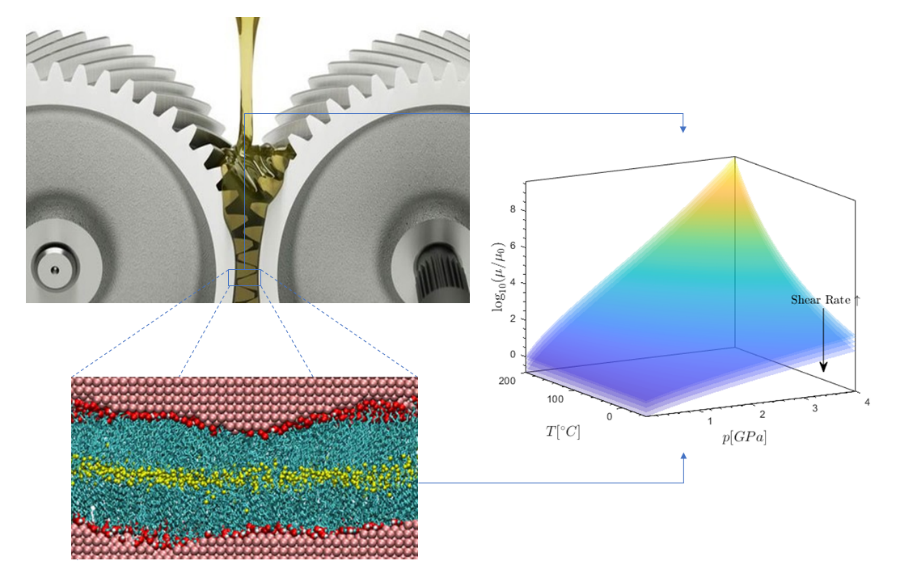Simulation of lubricant properties in gear and bearing contacts
Simulation of lubricant properties in gear and bearing contacts
Promotor(en): D. Fauconnier, T. Verstraelen /25411 / Model and software developmentBackground and problem
The rising demand for high power-density and performance of modern powertrains e.g. in wind turbines, pushes gears towards their limits in terms of power transfer, load capacity efficiency, durability and reliability. In wind turbine planetary gearboxes, for example, 70% percent of the failures are attributed to the roller bearings, of which 80% is believed to have inadequate lubrication of the rolling contacts as a root cause. Another 26% of failures are designated to failing gear teeth. Also here, inadequate lubrication is the most occurring cause of damage and wear of gear teeth flanks. In order to minimize premature failure and operational and maintenance costs, it is crucial to understand the physics which occur in lubricated bearing and gear contacts, operating under various conditions.
Gears and bearings operate under the so-called Elasto-hydrodynamic lubrication (EHL) regime. This implies that solid surfaces are just separated by an extremely thin oil film of barely 50nm-1μm thickness. Locally extreme hydrodynamic oil pressures (1-4 GPa) arise, resulting in a local solidification of the lubricant and a significant local elastic deformation of the solid surfaces. Furthermore, very high shear rates (10^6-10^7 s^-1) may occur as well as significant temperature rises (10 oC -50oC) in the contact. Those three parameters, i.e. pressure, shear rate and temperature, heavily influence the thermomechanical properties of the lubricants due to intensified interaction between the lubricant molecules. For instance, the lubricant becomes compressible and behaves no longer non-Newtonian. Hence, a clear understanding on the behaviour of the lubricant under extreme pressures, high shear rates and different temperatures, is key to select the proper lubricant for a specific application.
Unfortunately, as it is very difficult to perform high-pressure experiments, the precise thermo-physical properties of lubricants in EHL contacts, remain mostly a blind spot for lubricant suppliers, gearbox and bearing manufacturers, as well as scientists. Since the turn of the century, however, there has been an exponential increase of interest in Molecular dynamics (MD) simulation as sophisticated modelling approach to study e.g. the interactions between lubricant molecules under various conditions, and extracting the physical properties such as viscosity, density and others from those simulations.

Goal
The main objective is to map the macroscopic thermo-physical properties of a lubricant in a wide pressure, temperature and shear rate range relevant for elasto-hydrodynamic lubrication. These properties include,
- Density,
- Viscosity,
- Thermal conductivity,
- Heat capacity
- Limiting shear stress and wall slip velocity
- Vaporous Cavitation
We intend to use the well-established open-source LAMMPS code for Molecular Dynamics Simulations. We focus on single-molecule lubricants which consist exclusively of long - possibly branched - alkane chains (C20H42 – C40H82). The lubricant is modelled in a fully 3D periodic box of lubricant molecule. The strain rate is imposed, as well as the temperature and the hydro-dynamic pressure. Volumetric changes of the MD system are directly related to the density, whereas the calculated shear stress allows to extract the viscosity after statistical averaging.
- Study programmeMaster of Science in Engineering Physics [EMPHYS], Master of Science in Electromechanical Engineering [EMELME], Master of Science in Physics and Astronomy [CMFYST]KeywordsLubricants, Thermo-mechanical properties, Molecular dynamics simulations
